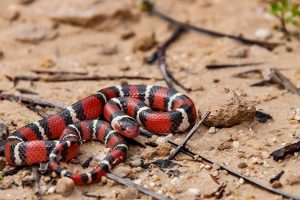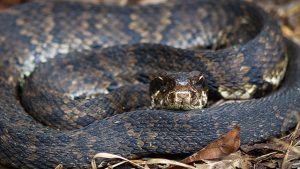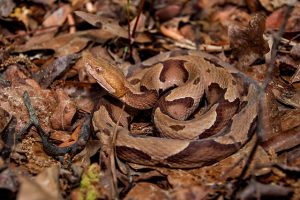Prepper survival: A guide to preventing and treating snake bites
Wednesday, November 07, 2018 by Rhonda Johansson
http://www.bugout.news/2018-11-07-a-guide-to-preventing-and-treating-snake-bites.html

According to the CDC, around 7,000 to 8,000 people get bitten by a venomous snake in America each year. Of these, only five will die. Now, that number may seem very small to you but experts all agree that this figure would be much higher if these people did not seek immediate medical care. But what do you do if you’re bitten in a survival situation and don’t have access to medical help? (h/t to PreppersWill.com)
Prevent it from happening
Avoid a snake bite with these tips:
- Research your location — Is the place you’re going to a known snake territory? If so, are the snakes that thrive there venomous? Learn what type of snakes frequent the place you’re going to. Take note that most snakes live under logs, rocks, and in long grass.
- Wear protective clothing –– Make sure that your lower extremities are protected. Even if it’s hot, wear heavy boots and pants. Take special care to cover your ankles, too.
- Be careful — Don’t turn over logs or rocks without first checking for snakes. Poke these with a stick if you’re unsure.
- Look to the skies — Yes, some snakes do hang on branches. Be careful with low-hanging trees.
- Don’t trust “dead” snakes — Freshly dead snakes still have reflexes and they can still bite you if you’re not careful. If you see a dead snake, just avoid it entirely. If you can’t resist in wanting to touch it, be sure to chop the head off first.
Okay, so you’ve been bitten
If, after all you’ve done, you still managed to get bitten, follow these steps:
- Keep calm. Avoid getting a second bite. Look at the snake that bit you and determine whether it is venomous. If it is, knowing which one will help medical experts know which antivenom to use.
- In the meantime, wash the bite with soap and water. Do NOT suck out the wound. Bacteria from your mouth will only cause the venom to spread further into your system. Don’t cut the wound, either.
- Take off any rings, watches, or anything that may cut off your circulation. Remember that snake bites cause the area to swell. (Related: Homeopathic Remedies Treat Insect Stings and Snake Bites.)
- Wrap a bandage two to four inches above the bite. If you can’t reach medical care within 30 minutes, you need to reduce the flow of venom to your heart. Use a bandage for this purpose. Don’t wrap the bandage too tightly, though, as this can cut off the circulation to the appendage completely.
- Use a suction device. In most snake bite kits, you will find a suction device that can help draw venom out of the wound. If used properly, this device can remove up to 30 percent of the venom.
What kind of snake bit you?
The first step in treating a snake bite is knowing what type of snake bit you. In North America, there are only four kinds you need to worry about: the coral snake, rattlesnake, copperhead, and cottonmouth.
Each of these snakes has their own distinctive markings and characteristics that you should become familiar with.
Coral snakes
Red Touch Yellow — Kills a Fellow
Red Touch Black — Venom Lack
Yellow Touches Red — Soon You’ll Be Dead
Red Touches Black — Friend of Jack

This is venomous.
Coral snakes are some of the most easily identifiable snakes due to their bright color, but non-venomous king snakes bear a striking resemblance to their deadly cousins. One of the easiest ways to tell them apart is to look at their heads. If the snake that bit you has a black snout, it’s the venomous coral snake.

This is not.
Rattle snakes

As their name suggests, rattle snakes are noisy. They hiss and shake their rattles rapidly as a warning before they attack.
Cottonmouth

Cottonmouths have a distinctive triangular head and a dark band that runs through their eyes and body. These snakes are more commonly found in swamps and rivers.
Copperhead

These snakes are normally chestnut in color and have rich, brown crossbands. They are usually found along rocky areas and can be very hard to see, as they blend in very well among the foliage.
Find more survival guides for your next wilderness trip at Survival.news.
Sources include:
Tagged Under: Tags: bug out, medical emergency, off the grid, preparedness, prepper, prepping, snake bite kit, snake bites, snakes, survival, survival medicine, venom, venomous snakes, wilderness

